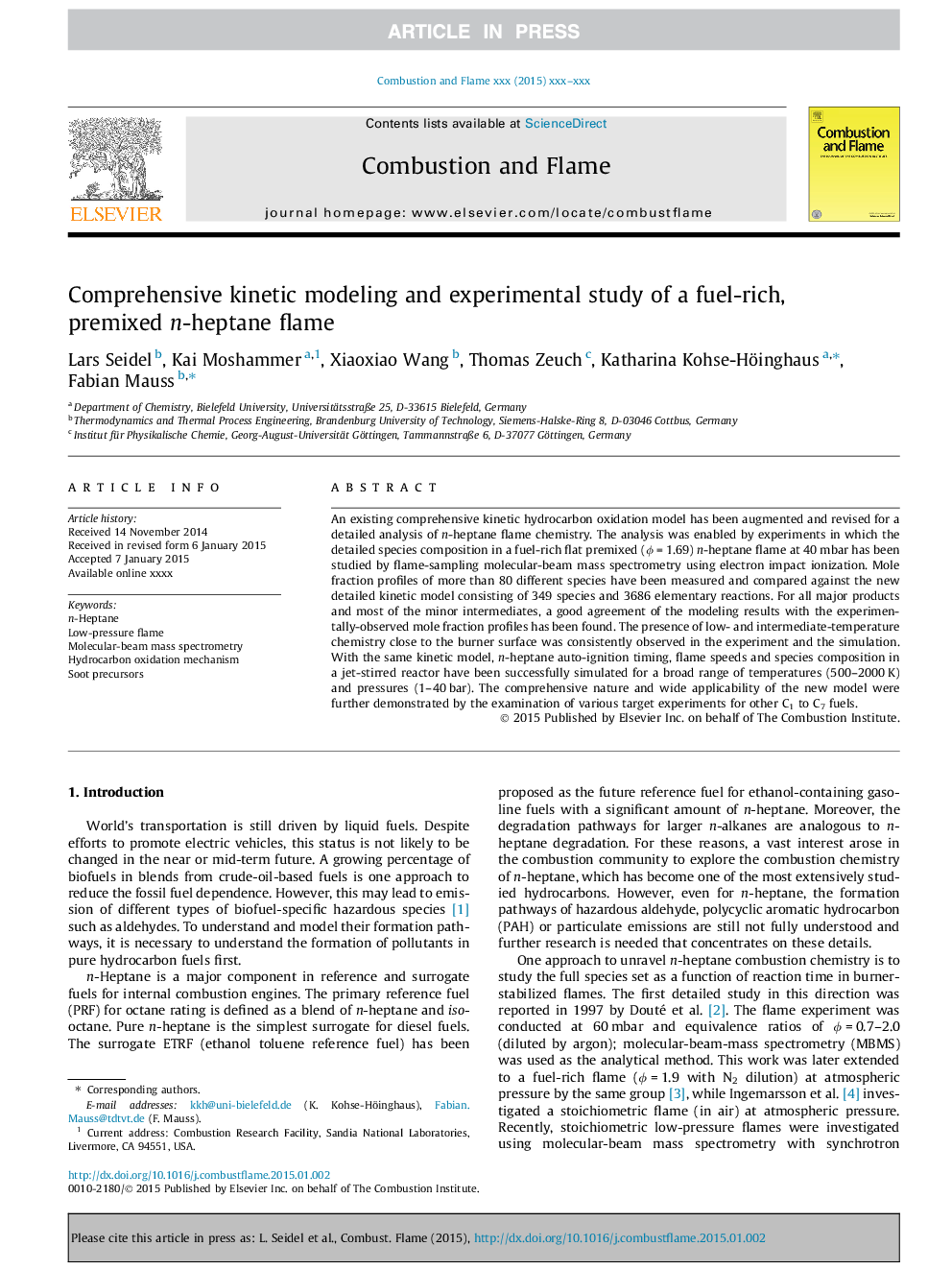| Article ID | Journal | Published Year | Pages | File Type |
|---|---|---|---|---|
| 10264306 | Combustion and Flame | 2015 | 14 Pages |
Abstract
An existing comprehensive kinetic hydrocarbon oxidation model has been augmented and revised for a detailed analysis of n-heptane flame chemistry. The analysis was enabled by experiments in which the detailed species composition in a fuel-rich flat premixed (ÏÂ =Â 1.69) n-heptane flame at 40Â mbar has been studied by flame-sampling molecular-beam mass spectrometry using electron impact ionization. Mole fraction profiles of more than 80 different species have been measured and compared against the new detailed kinetic model consisting of 349 species and 3686 elementary reactions. For all major products and most of the minor intermediates, a good agreement of the modeling results with the experimentally-observed mole fraction profiles has been found. The presence of low- and intermediate-temperature chemistry close to the burner surface was consistently observed in the experiment and the simulation. With the same kinetic model, n-heptane auto-ignition timing, flame speeds and species composition in a jet-stirred reactor have been successfully simulated for a broad range of temperatures (500-2000Â K) and pressures (1-40Â bar). The comprehensive nature and wide applicability of the new model were further demonstrated by the examination of various target experiments for other C1 to C7 fuels.
Related Topics
Physical Sciences and Engineering
Chemical Engineering
Chemical Engineering (General)
Authors
Lars Seidel, Kai Moshammer, Xiaoxiao Wang, Thomas Zeuch, Katharina Kohse-Höinghaus, Fabian Mauss,
